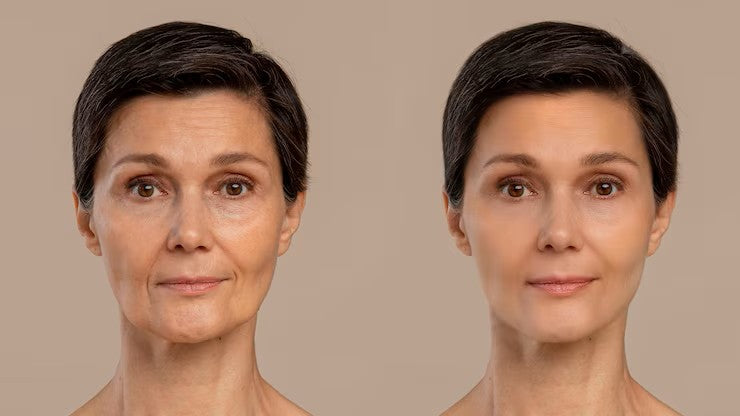Dermal Fillers vs. Botox: What’s the Difference and Which Is Right for Your Clients?
Botox and dermal fillers are two of the most popular treatments in the world of non-surgical aesthetics, but they serve very different purposes. At Rosvia, we know professionals are often asked, “What’s the difference?” or “Which one should I get?” This blog helps you clearly explain both options to your clients, so they feel informed and confident in their decisions.
What Is Botox?
Botox is a neuromodulator, made from botulinum toxin type A. It’s used to temporarily relax muscles beneath the skin, which helps reduce the appearance of dynamic wrinkles lines formed from repetitive facial movements like frowning, squinting, or raising the eyebrows.
Common Botox treatment areas include:
- Forehead lines
- Glabellar lines (between the brows)
- Crow’s feet around the eyes
- Bunny lines (nose wrinkles)

How It Works:
Botox blocks nerve signals when injected into targeted muscles, stopping the muscle from contracting. The underlying skin looks smoother, but facial expression remains natural when applied correctly.
What Are Dermal Fillers?
Dermal fillers, often made with hyaluronic acid, are gel-like substances that are injected under the skin to add volume, contour facial features, and smooth deeper folds or static wrinkles.
Popular treatment areas include:
- Cheeks (volume loss)
- Lips (augmentation)
- Nasolabial folds (smile lines)
- Jawline and chin
- Tear troughs (under-eye hollows)
How They Work:
Fillers replace lost volume, define structure, and can even stimulate collagen in some cases. Brands like Juvederm, Revolax, and Restylane offer a range of viscosities to suit different areas of the face, from soft and flexible to firm and sculpting.

Botox vs. Fillers: The Key Differences
| Feature | Botox | Dermal Fillers |
|---|---|---|
| Function | Muscle relaxant for wrinkle prevention | Volume restoration & contouring |
| Treatment Area | Upper face (forehead, eyes) | Mid-to-lower face, lips, cheeks, etc. |
| Results Duration | 3–4 months | 6–24 months (depending on product) |
| Onset of Results | 3–7 days | Immediate |
| Texture | Clear liquid | Gel-like substance |
| Effect on Skin | Smoother by reducing movement | Plumper, more lifted appearance |
| Ideal For | Expression wrinkles | Volume loss, facial shaping |
Can You Use Both Together?
Absolutely, and many professionals do.
Botox and dermal fillers complement each other beautifully when used correctly. Botox is perfect for preventing wrinkles from forming, while fillers are ideal for replacing volume lost over time.
This combined approach can create a balanced, youthful look without surgery, and often with little to no downtime.
Final Takeaway: How to Choose
-
Choose Botox if your client wants to smooth wrinkles caused by facial movement, like crow’s feet or forehead lines.
-
Choose dermal fillers if the concern is volume loss, deeper folds, or sagging, especially in the mid-face and lower face.
-
For optimal, natural-looking results, a combination approach is often best.
At Rosvia, we’re here to support professionals with the highest-quality injectable products, trusted brands like Juvederm, Revolax, and more — all backed by fast global shipping and fair pricing.
Need help selecting the right filler or Botox equivalent for your clinic?
Reach out to our team — we’re always happy to assist.
Explore our collection: www.rosvia.com











